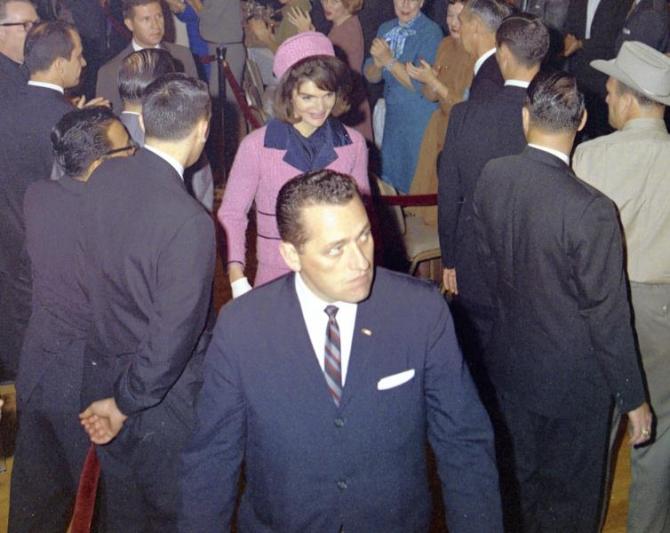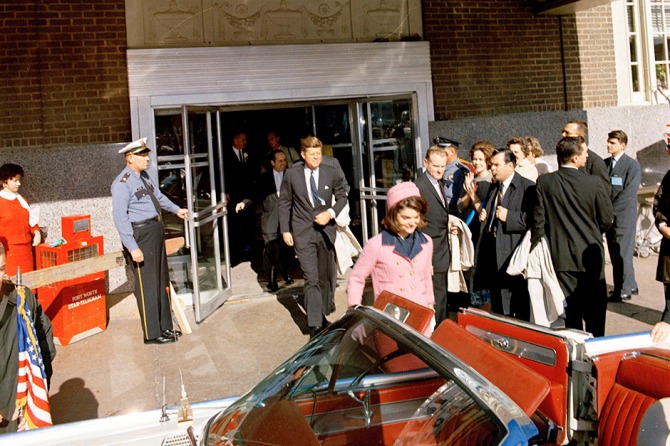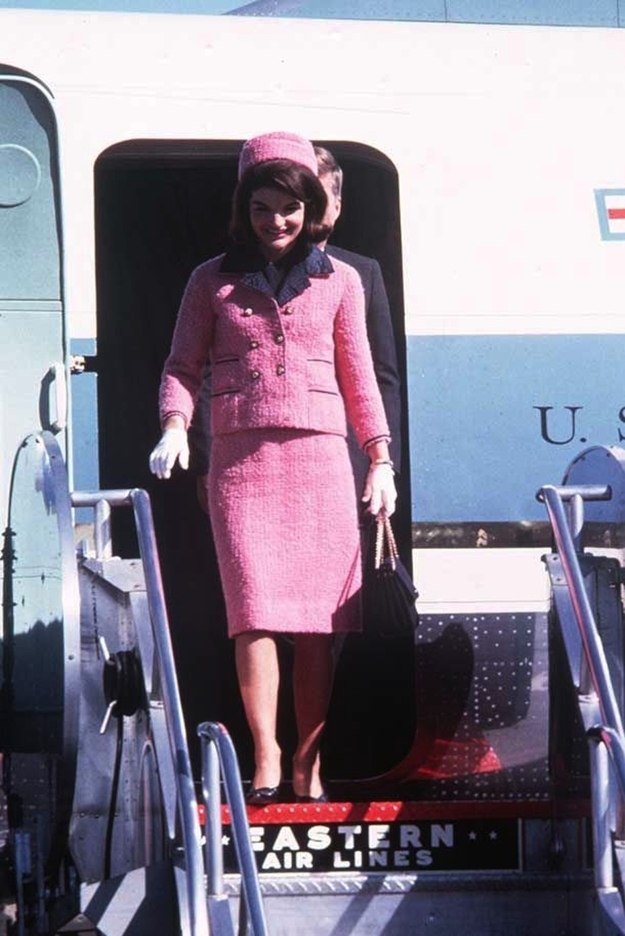“There’s a metaphoric equivalence between our retrospective glances toward Jackie in 1963 and Jackie’s own movement onto the back of the car, an instant obsessively replayed.
Symbolically, aren’t we climbing with her on the trunk? Aren’t we trying to retrieve some shard? Because Jackie herself could not remember climbing backward, that moment has become a figure for the failure to remember, the failure to retrieve. Jackie couldn’t retrieve the memory of the incident; Jackie couldn’t retrieve JFK’s life; we can’t retrieve Jackie, who seems always as lost to us as JFK was lost to her […] 
[…] ‘Dallas,’ or ‘November 22, 1963,’ or ‘Jackie’s Ordeal,’ or ‘JFK’s Murder,’ or ‘What Jackie Went Through’: whatever grave phrase I use, that moment disturbed the time line, because the assassination instant (via Jackie’s reaction) remains alive. Our wish to plumb the depths of what Jackie felt or didn’t feel, what Jackie was looking for on the back of the car, ensures that this instant retains an afterlife […]
[…] We may not care about JFK; we may not care about American sovereignty. But we still want to know what Jackie was looking for; or, rather, we want to insert ourselves into a moment excerpted from the flow of time. What makes this assassination instant ‘infernal’ isn’t just its tragic dimension; it’s the moment’s detachability from forward-moving time, and Jackie’s position as the backward-crawling woman in this instant’s cage. Years pass, and still November 22, 1963, retains its ripeness, its willingness to be interpreted. The moment is flexible and capacious and infinitely extensible because it’s a frozen instant with a living woman captured inside it […]
[…] like a woman in hell, compulsively repeating a task without meaning. The task Jackie repeats is to crawl on the trunk of the car and then to look back at JFK, to crawl on the trunk of the car and then look back at JFK… When we rescrutinize this instant, under the guise of trying to figure out who killed JFK, we’re actually participating in Jackie’s inferno, by resubjecting the prisoner to her set task, a mirror of our own. We look backward; so does Jackie. Neither of us will solve anything. The limo speeds up, and time moves on, but icon Jackie will never leave this instant’s fiery perimeter […]
[…] The world’s ‘oppressive obsession’ with Jackie is a ritual repetition of a single crime, our crime, not Jackie’s the crime of wanting to exit a vehicle, the crime of wanting to be rid of one’s President, or one’s husband, or one’s life. Or simply the crime of wanting to flee one’s own identity. We repeat icon Jackie to make sure she’s stuck in her identity. Meanwhile, our own identities, while we watch Jackie, may enjoy radical flux.”
“At the assassination, Jackie sprang to illicit life. Her sublimity began at the moment of JFK’s murder. At that instant we identified with her (or in retrospect, reliving Dallas, we sympathize with her and imagine the event from her point of view); the experience of identifying-with-Jackie-at-Dallas transported Jackie under our skin. Suddenly we felt her terror, as if it were ours; suddenly we saw earlier, pre-assassination Jackie as forever remote from this new, bloodied, widowed Jackie.”
“She underwent an intimate agony in public. Everyone saw it– a televised execution. Spectator sports: voyeurs, we watched and continued to watch the killing. Everyone has memorized Jackie’s worst moment, its image already banal; everyone has access to Jackie’s nightmare. Her dress was bloodstained in front of the entire world. Of course, the principal horror was JFK’s death; but a secondary horror was that the world saw Jackie bloodied, the world saw Jackie crawl […]
A border of propriety was crossed, publicly: we saw the President brought down and Jackie messed up. Henceforth everyone seeing Jackie would remember that moment: she was most famous for being the woman in the bloodstained suit, the woman whose husband was murdered while she sat beside him. Her fame, therefore, had a gruesome subtext […]”
“in Dallas she became the seam linking two entirely detached temporal realms: the JFK administration and its afterward. One moment she was present with live JFK; the next moment, he was dead, and time had progressed, with only Jackie present to be liaison between the epochs.”
“She became retro in 1963. Life, reporting on Jackie after the assassination, noted, ‘friends find her almost always in a reminiscent mood,’ and Billy Baldwin quotes Jackie as saying, ‘There’s something so final and passé about it.’ She’s positioned to the rear of us; to invoke ‘Jackie’ or ‘Jackie O’ was (until her death) at once to acknowledge an uncanny survivor, someone who’d managed to persist to this day, still contemporary, as it was to acknowledge a bygone actress in a vanished scene […]
[…] ‘Jackie’ lives for me amid the long arcade of shadows formed by stories and images that prove nothing in particular and that have no inexorable hold on any single truth, but that combine willy-nilly. The main reason that Jackie rises above the familiar profane temporal dimensions is that we’ve moved on, in time, since 1963, but our image of Jackie hasn’t entirely.”
“Our role, as Jackie watcher, is to understand her inner dignity, beneath the ratty vestment of myth. She has, for us, the reality of all heroines– we imagine that her reminiscences and sorrows have a depth lacking in mundane, real life– or else we use icon Jackie to articulate our own ambiguities, those that don’t easily surface into speech, and that only stammer into audibility when we see them mirrored in art.”
(Wayne Koestenbaum, Jackie Under My Skin, NY: Plume, 1995; pp. 252-255; 248-249; 58; 59; 246; 236; 237-238; 158)
























Pingback: we steal stories | finding jackie
Pingback: 60 Years After JFK’s Death It Is More and More Apparent that Kennedy Was a Victim of a Palace Coup—Spearheaded by Vice-President Johnson - Eastern Angle